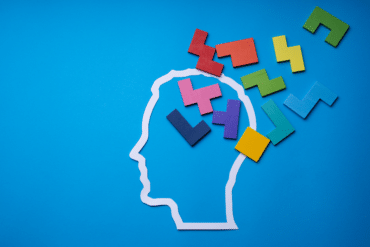Until pretty recently (around the 1950s), we didn’t understand much about sleep.
Even scientists assumed that sleep was a passive activity — something that we did when our brains and body laid dormant.
However, researchers quickly learned that this wasn’t the case. It turns out that sleep is a crucial period of growth and development in the body.
If you fail to get enough sleep, the repercussions can be huge, from an increased risk of long-term illnesses to short term pain and discomfort.
However, there’s no one-size-fits-all pattern to getting sleep right either.
Countless factors can affect your definition of the perfect night’s sleep, from your age to your activity levels each day.
Because of this, many of us spend years looking for the right sleep cycle to make us feel rested, energized, and satisfied.
If you’re ready to begin your search for the sleep cycle that will change your life once and for all, you’ve come to the right place.
Today, we’re going to look at everything from the different sleep cycle stages that all human beings go through, to the different kinds of schedule you can consider.
Let’s get cycling.
What is the sleep cycle, anyway?
In simple terms, a sleep cycle is what happens inside of your brain when you’re getting a night’s rest.
As you snooze, your brain goes through various patterns of behaviour. This is based on things like muscle activity and distinct eye movements.
The eye movements that occur when you’re in each of the sleep cycle stages have lead to the two main types of sleep. These being defined as rapid eye movement (REM sleep) and non-rapid eye movement (NREM sleep).
When you first drop into unconsciousness, you’ll go into non-REM sleep — a process that’s made up of four stages.
The first stage happens when you’re on the cusp of being awake and asleep.
The second stage involves very “light” sleep.
The third and fourth stages are deeper states of slumber.
Although there are still some people that argue that the REM sleep cycle is the most important of all, newer data suggests that non-REM might actually be more valuable for memory and learning.
REM sleep, however, is when we dream, which could mean that it has an impact on our creativity levels.
As you cycle through the evening in and out of REM sleep, your eyes move rapidly behind your closed lids. Your brain waves change pace as they adjust to mimic states that are closer to wakefulness during REM.
The sleep cycle repeats itself constantly during the night. Often, you’ll have about five or six full sleep cycles.
Each new cycle is different from the last, however.
For example, during the first few sleep cycles, you spend most of your time in deeper non-REM sleep.
During the later stages of your slumber, you spend more time in REM and light stage sleep.
Using a sleep cycle calculator, you can sometimes figure out exactly when to set your alarm. This way you wake up in the lighter stages of sleep, and don’t feel as groggy.
Understanding the sleep cycle and how much rest you need, can also help you to avoid the symptoms of sleep deprivation.

The typical sleep cycle stages
During the sleep cycle, your body and brain transitions through five different stages of both non-REM and REM sleep.
Typically, each sleep cycle will last around 90 minutes. However, your cycle can differ depending on certain things.
Though the REM sleep cycle is the most talked about, thanks to its relationship with dreaming, it’s worth noting that every stage of your slumber is important.
All stages have their own restorative function to offer, from hormone regulation to memory consolidation and muscle recovery.
Stage 1
In the first stage of the sleep cycle (the transitional phase), you’re in between consciousness and unconsciousness.
During this NREM stage, you’re still partially awake, and your muscles often jerk.
You might even get that sensation as though you’re falling — this experience is called hypnic myoclonia, and it happens because of your brain and body adapting to sleep.
Stage 2
A significant portion of your sleep cycle takes part during the second stage of sleep.
This is also a non-REM phase, and it’s a lighter kind of sleep too. During this time your core body temperature decreases, and your heart rate begins to slow.
Your eye movement slows down, and your brain wave reduce too, with occasional bursts of activity frequently known as “spindles”.
Stage 3 and 4
These phases of the sleep cycle are often bundled together because they’re very similar.
In stages 3 and 4, you’re in the much deeper parts of sleep, when it’s harder for someone else to wake you up. You enter “slow wave sleep” which is also a non-REM phase, but it also tends to be when you begin to process feelings and lessons from the day.
In addition to your brain slowing, your blood pressure will drop, and your breathing starts to slow down and get deeper.
During slow wave sleep, your body also releases hormones that help to replenish the muscles that you tired out through the day. These hormones help to control appetite and support the development of a strong body.
Stage 5
This the REM sleep cycle — the part of sleep that’s often spoken about by professionals and sleep specialists.
Stage five is the only stage of sleep that includes rapid eye movement, and it’s often bursting with activity. Most adults only spend around 20% of their slumber in REM sleep, when the eyes are darting in various directions as you snooze.
Your breathing becomes more irregular in this sleep, and your blood pressure and heart rate rises. Most of the time, dreaming takes place in this stage because your brain is more “awake”, this supports sharp function.
At the end of stage 5, you begin to wake up again, and your body rinses and repeats the entire sleep cycle.
As mentioned above, each person goes through numerous sleep-wake cycle experiences each night. The number of full cycles that you need will depend on you, although five or six cycles on average is usually the go-to option.

Sleep cycle calculator: Figuring out what works for you
Understanding the sleep cycle and how it works is crucial to figuring out a sleeping pattern that’s good for your health and wellness.
Although there are guidelines in the world today for how much sleep each person needs, it’s complicated to figure your number out without some real experimentation.
That’s because everyone has their own individual sleep needs.
The easiest way to make the most out of your sleep cycle, is to use a sleep calculator. It helps you establish a fixed time when you want to wake up and go to sleep each day.
To get you started, it’s often a good idea to check the recommended sleep cycle guidelines for someone of your age. Remember, how much sleep that you need changes during your lifetime.
Infants need anywhere up to 17 hours of sleep every day just to help their brains to form properly. On the other hand, older adults generally only get around 7 to 8 hours of sleep each night.
Age-based guidelines can be useful when it comes to getting a basic suggestion of how much sleep you might need. The guidelines cover hours of sleep needed for optimal health, according to the available research.
Here are the guidelines on a good sleep wake cycle strategy for each age group from the National Sleep Foundation’s research:
- Birth to 3 months: Between 14 and 17 hours each day
- 4 to 11 months: Between 12 and 15 hours per day
- 1 to 2 years: Up to 14 hours a day (minimum of 11)
- 3 to 5 years: Between 10 and 13 hours each day
- 6 to 13 years: At least 9 hours per day and up to 11 hours
- 14 to 17 years: Between 8 and 10 hours per day
- 18 to 64 years : Around 7 to 9 hours each day
- Over 65: Between 7 and 8 hours.
Notably, even if you follow the guidelines given by the National Sleep Foundation, you’ll still need to do some experimentation. That’s because everyone’s sleep requirements are different, even if you’re in a specific age group.
Using a sleep calculator can help you to figure out exactly how much rest you need.
Sleep calculators use your wake-up time, the time that it takes to complete five or six 90-minute cycles, and 15 minutes to fall asleep.
With a sleep calculator, you determine when you need to wake up and when you need to fall asleep to complete your cycles and start to stir somewhere in the lighter stages of sleep.
You start with around 7 hours of sleep per night, then gradually add 15 minutes to your cycle to determine if you wake up feeling more rested and comfortable.
When you start to wake up naturally, rather than being woken by the sound of your alarm clock, you know that you’ve got a successful sleep cycle in place.
From Everyman to the Uberman sleep cycle: Strategies for rest
Most people don’t realise how diverse sleep cycles can really be.
The majority of us sleep up to 8 hours per day on average. We fall asleep at the same time on an evening and wake up every morning (hopefully at around the same time).
This is something that experts call the “monophasic” sleep cycle.
If you follow a monophasic sleep cycle, like many of us do, then you get all of your slumber into one session a day, usually at night.
However, monophasic sleeping isn’t the only way to get the beauty sleep that you need.
There are some people in different cultures around the world that believe it’s much better to have multiple periods of shorter sleeping times throughout each day.
This is called a polyphasic sleep routine, and when you adjust to it, you get to sleep for between 90 minutes and 6 hours a day, in various chunks.
While switching your sleep cycle up to the point where you no longer have your long nighttime slumber might seem like a strange step to take — it really works for some people.
Studies have shown that some of the greatest minds in history were polyphasic sleepers — including Leonardo Da Vinci and Nikola Tesla.
Da Vinci, for instance, only had 20-minute naps every four hours. This meant that he could stay awake for most of the day, working on his experimentations.
Nikola Tesla claimed that he never slept for more than 2 hours at once during the day. He happened to also be one of the smartest people that ever lived.

Examining the different types of sleeping cycles
So, is the monophasic sleep cycle that most of us are using really the right way to go when it comes to getting the best amount of rest?
Well, that all depends. There’s no hard and fast rule when it comes to getting the slumber that you need. Everyone has their own unique requirements.
However, if you’re struggling with sleep deprivation, or you think that your current strategy isn’t working for you, then you can always try putting a new cycle to the test to see if something else works a little better.
Let’s take a closer look at some of your options.
1. Biphasic sleep
The monophasic sleep cycle is the most common routine, and it involves getting your eight hours a day every evening.
The most common option outside of this is the biphasic sleep cycle, which splits your sleeping pattern. You get one period of up to 6 hours of sleep each night, then a short nap in the middle of your day.
This is usually the sleep cycle that’s recommended for people who don’t have trouble getting to sleep at night after a nap during the day.
2. The Everyman sleep cycle
The Everyman sleep cycle is a slightly more confusing and complicated option for people who want to adjust their rest routines.
The Everyman cycle involves getting around four or five hours of sleep a day in total. You get four periods of sleep, one that lasts for around 3 and a half hours, and three short 20-minute naps.
You really need some time and a lot of dedication to get used to this sleeping routine at first.
However, if you can adjust to the everyman sleep cycle, then you’d be surprised at what you can accomplish.
You can usually get up to four extra hours in your day — which is excellent for people who have a hard time balancing work, social and family life.
3. The Dymaxion and Uberman sleep cycle
If you think that switching to the Everyman sleep cycle isn’t enough for you, then it’s worth trying the Dymaxion or Uberman cycle instead.
The Dymaxion is often the hardest to adjust to, as you only get 2 hours of sleep each day in total. Those sleep cycles are split into four stages of 30-minute naps.
However, this process can work for people who don’t really need to get much sleep to cope.
If you need something that isn’t quite that drastic, you can stick with the Uberman sleep cycle to begin with.
The Uberman consists of between 6 and 8 naps each day, each usually consisting of around 20 minutes. Once again, you’re only getting 2 hours of sleep in total.
Although you definitely get a lot more hours of wakefulness in your day with these different styles of sleeping, there are downsides.
For instance, at first, you’re likely to experience a lot of the symptoms of sleep deprivation.
It’s going to be particularly difficult to cope in the early stages of your routine change, when your body and mind are getting used to the switch.
Additionally, some people find that moving to a polyphasic sleep cycle makes it harder for them to concentrate on complex tasks that last more than a few hours.
Perfecting your sleep-wake cycle
So, how exactly do you get the ideal sleep wake cycle into your routine?
Well, that all depends on you.
Some people will achieve incredible benefits by embracing a polyphasic sleeping routine. This is particularly useful for people who run their own businesses or have their own freelance schedule.
While other people will simply need a way to improve their current monophasic sleep cycles.
Whichever strategy you choose, these tips are likely to come in handy:
Spend more time exercising
Exercising regularly during the day will make it easier for you to fall asleep when you want to.
Exercise is particularly useful if you can combine it with exposure to sunlight.
Getting plenty of natural light can help to set your body’s circadian rhythm, which has a direct impact on your sleep wake cycle.
Use naps carefully
If you’re using polyphasic sleep cycles, then you will need to figure out how to use your naps properly to get the most out of them.
If you’re sticking to the monophasic sleep wake cycle, avoid napping too late in the afternoon, as this could harm your schedule.
Adjust your diet
Changing your diet can make a huge difference to your sleep quality.
Limiting exposure to alcohol, caffeine and other substances that keep you alert and awake makes it much easier for you to sleep when you want to.
Change your routine
Get into the habit of relaxing before you’re due to sleep, with a bedtime bath or a nice cup of tea.
You should also turn the lights down before you sleep and switch off electronics that could stimulate your brain with bright blue lights.
Even adjusting the thermostat in your bedroom can be useful. The National Sleep Foundation says that 18.3 degrees Celsius is the perfect sleeping temperature.
Learn to relax
No matter which sleep cycle you’re using, you need to know how to relax before you fall asleep.
Focus on guided breathing and use apps for meditation if you need to. You can also listen to white noise or read a book to help you switch off when you’re in bed.
Get comfortable
Don’t underestimate the power of the right sleeping arrangement.
Something as simple as updating your bed or changing your sheets can really have a drastic impact on how well you sleep.

Creating the perfect cycle
Clearly, the sleep cycle is a complicated thing.
In the Western world, most of us experience one large sleep cycle every night.
However, there’s nothing stopping you from experimenting with other strategies too, like the Uberman sleep cycle, or the Everyman.
The key to finding the right slumber schedule for your needs is often experimentation. You need to study your sleeping patterns and figure out which plans work best for you. Remember though, testing out new sleeping routines can be a complicated process.
You’ll need to give your mind and body time to get used to each new plan before you write something off and say that it doesn’t work.
In the meantime, consider visiting your doctor to see if he or she can recommend any useful ways for you to improve your sleeping schedule.
This is a particularly important step to take before you experiment with any cycle changes if you think that you might have a sleep disorder.
You can also check out the other articles we have here at Siestio for more tips on how to get the most out of every snooze session.
Siestio. Sleep Matters.
Medical disclaimer
You must not rely on the information provided on our website as an alternative to medical advice from your doctor or other healthcare professionals. For more information read our full disclaimer here.







